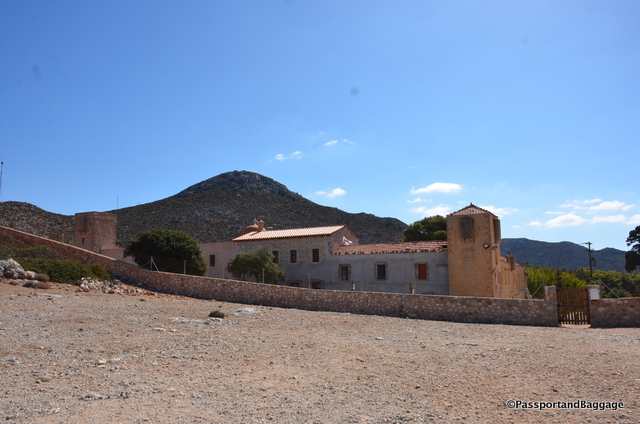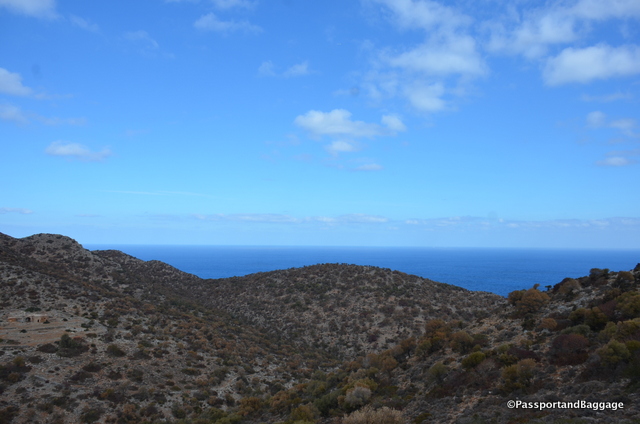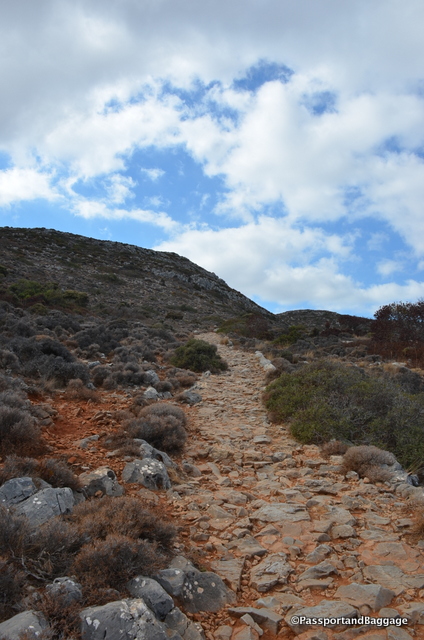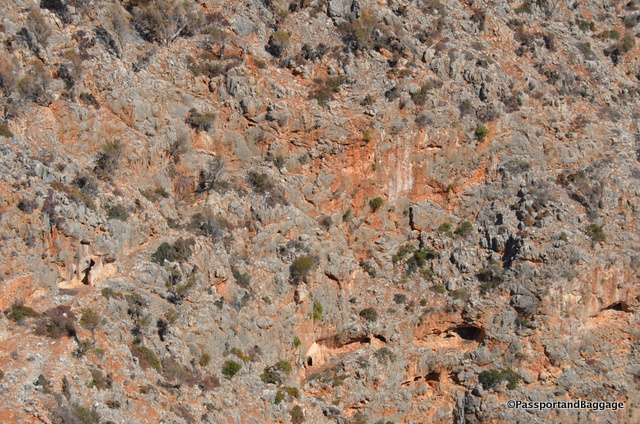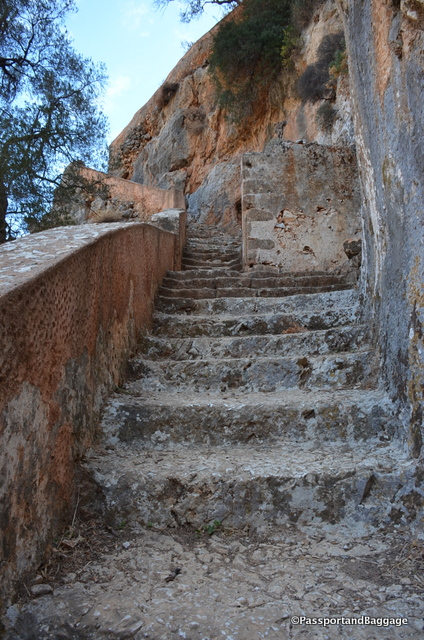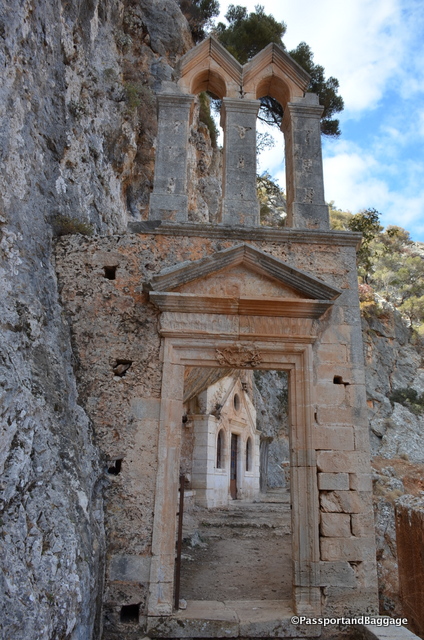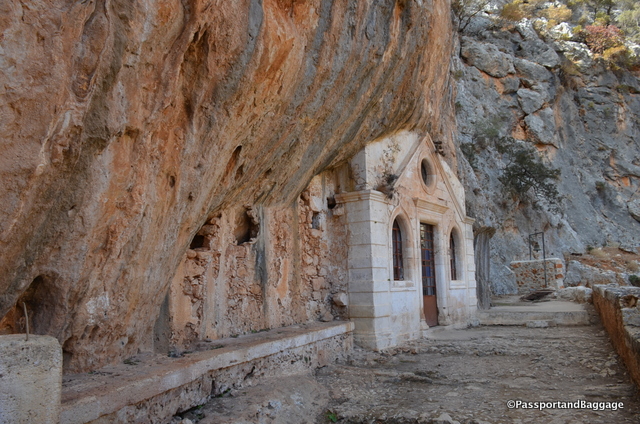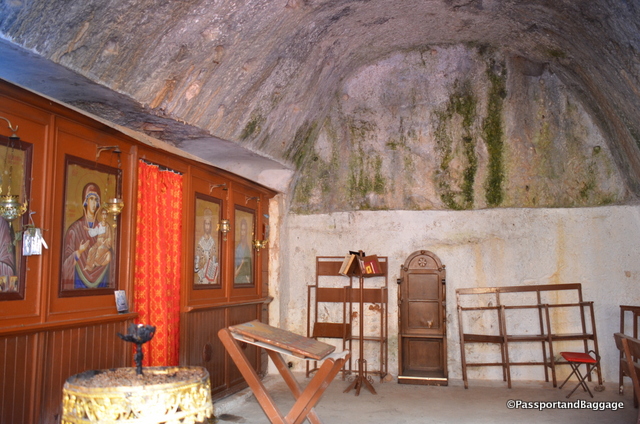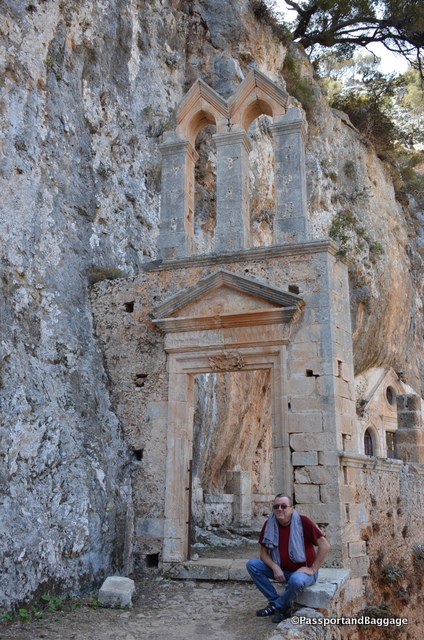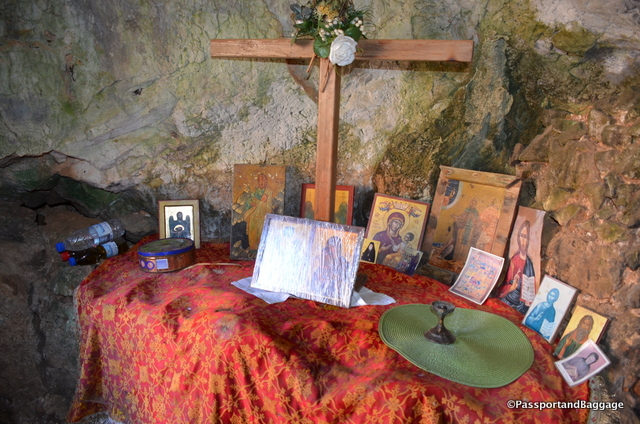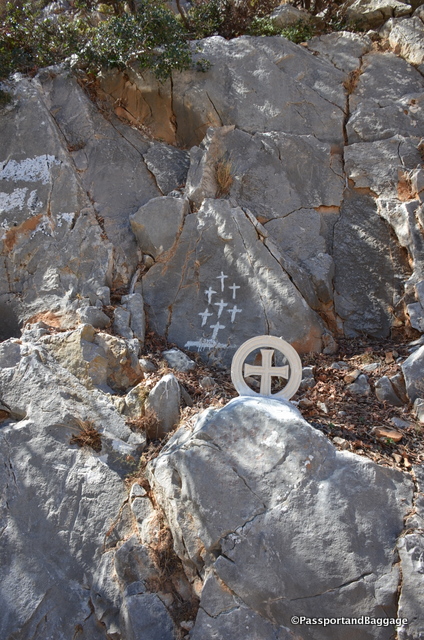October 19, 2016
Today we moved from Chania to Rethymnon with a side trip to the Katholiko Monastery or Monastery of St. John the Hermit.
We began by getting terribly lost leaving Chania. That is not that difficult as roads and sites in Greece have always been terribly marked.
After many small winding roads, and false starts we finally made it to the Gouverneto Monestery, which is where the adventure begins.
You walk through the Gouverneto Monastry, staying silent, and not taking pictures until you find the wooden door at the far side of the monastery. Here you walk through the door to a vista of beauty.
While there is a “paved” footpath, be prepared for a treacherous climb. It is 30 minutes straight down. I was unable to determine the elevation change, but my phone said we climbed down the equivalent of a 32 story building. Keep in mind that means you must climb up that exact same amount to return to the first monastery.
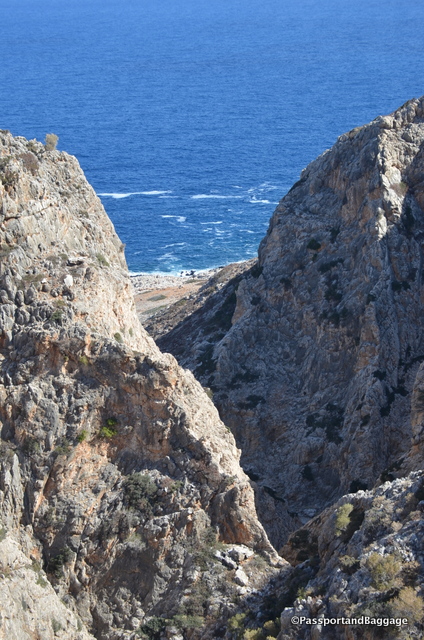
The view from about 2/3 of the way down. You still can not see the monastery, so at this point many people give up
It is thought that the buildings here date to shortly after 1600, and that there was a much earlier monastery here, considered the oldest in Crete. Unfortunately this is not confirmed by historical sources, and the Venetian census of 1637 does not mention a monastery here, only the church of St John the Hermit, which belonged to Gouverneto Monastery.
However, a “katholiko” is the main church of a monastery, where the monks gather to pray each day. This name is strong evidence for the existence of an old monastery on the spot, even if all traces of it have now been lost.
It is also said that the monks abandoned Katholiko Monastery due to pirate raids and built a new monastery, Gouverneto. Researchers doubt this, given that Katholiko Monastery was dedicated to St John the Hermit, while Gouverneto Monastery is dedicated to the Virgin. This change would have been considered deeply disrespectful to the saint of the older monastery, so this information is considered doubtful.
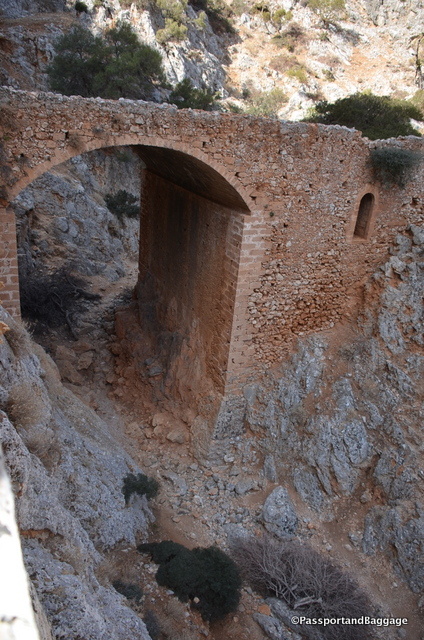
The two sides of this amazing archway over the ravine. The sides contain rooms as you can see by the small windows
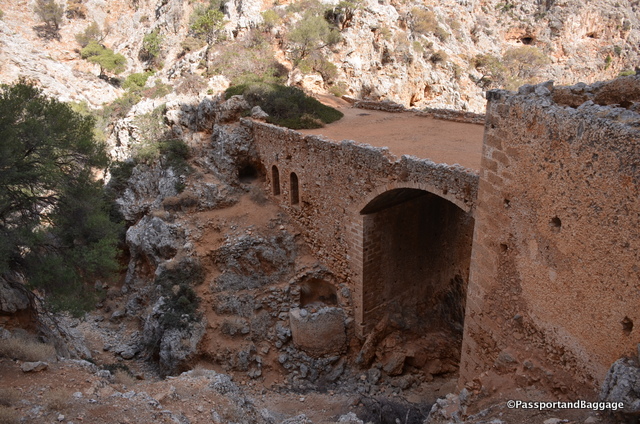 The remains are truly impressive. The engineering required to cut into the hillside, and to build the building over the ravine are something to behold and stare in awe.
The remains are truly impressive. The engineering required to cut into the hillside, and to build the building over the ravine are something to behold and stare in awe.
There is also the story of Saint John the Hermit. It is is thought that Saint John the Hermit came here from Egypt and was active in many parts of Crete. It is said that he lived off wild greens in the winter and carobs in the summer. Legend has it that, near the end of his life, he was no longer strong enough to walk upright, due to his poor diet and the hardships of the ascetic life. One day a distant hunter mistook him for an animal, as he was walking all crouched up, and injured him with his arrows. The injured saint returned to his cave and died lying on a rock, now known as “St John’s bed”.
There are not any signs or information once you reach the site, you are really on your own, so one can only speculate how this site was used or how each element actually functioned.
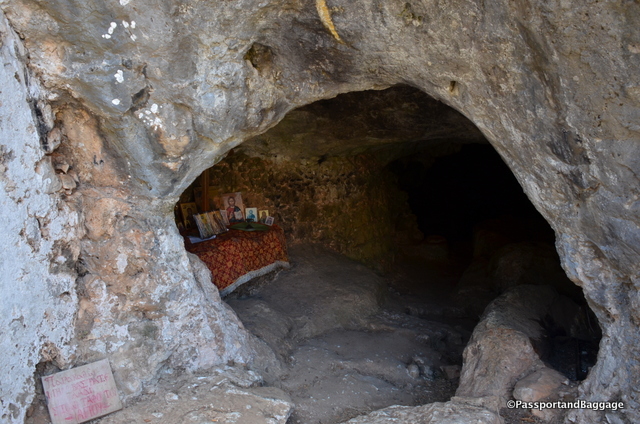
There is an entry to a cave as you approach the monastery, its actual purpose or history was lost to me.
As you drive up the road to the monastery you pass a rather large shrine, that is worth a stop.
The plaque attached reads:
In this area, the Turkish conquerors of Crete (1645-1898) who succeeded the Venetian crusaders (1211-1645) slaughtered, on June 16, 1821, seven monks of the Gouverneto Holy Monastery, during the general massacre of the Christian population of Crete.
The Gouverneto Monastery, like all Monasteries in Crete, the rest of Greece and Cyprus, was the bastion of revolutions and battles “for the holy faith of Christ and for the country’s freedom”. This was, after all, the motto for every revolutionary movement of the Greeks, where bishops, priests and monks of the Greek Orthodox Church played the leading role.
